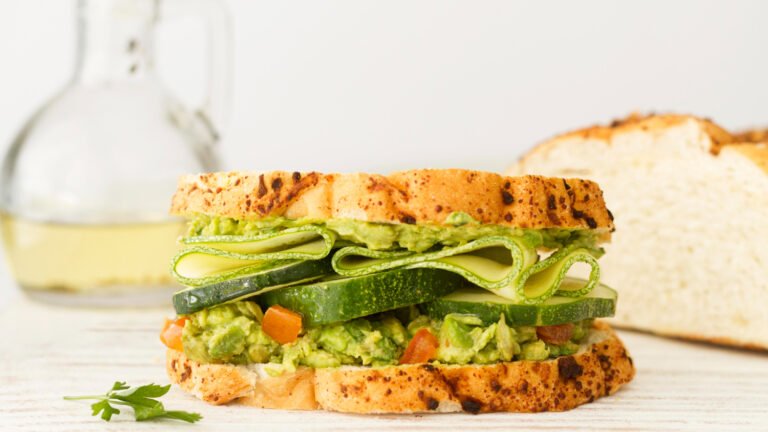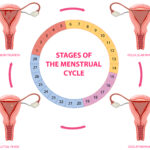FREE SHIPPING OVER $50
Want Better Gut Health and More Protein? A Doctor Reveals the Surprisingly Simple Way to Get Both
If you’re trying to eat more protein and support your gut health, you’re definitely not alone. These are two of the most talked-about wellness goals today—and for good reason. High-protein diets help maintain muscle, keep you full longer, and support metabolism. Meanwhile, a healthy gut can influence everything from digestion to immunity and even mood.
But here’s where it gets interesting: a doctor-approved, simple strategy could actually help you tackle both at once.
No, it’s not a fancy cleanse or some expensive powder. It’s a small, sustainable shift to your plate—one that’s backed by science and built for real life.
Let’s break down how to eat more protein while boosting gut health at the same time.

The Gut-Protein Connection
Protein isn’t just for muscle—it plays a major role in gut health, too. Your gut is home to trillions of microbes that thrive off certain nutrients. While fiber is usually the gut’s golden child, protein—especially when it comes from the right sources—also influences your gut microbiome.
Research states that the quality and source of your protein can either help or harm your gut.
Ultra-processed meats and protein bars often come with preservatives, artificial sweeteners, and gut-disrupting additives. But when you focus on natural, whole food proteins, you’re not just fueling your muscles—you’re feeding your microbiome.
Why “Simple” Is Key (And Where Most People Go Wrong)
It’s easy to fall into the trap of overcomplicating your diet. Juggling protein macros, probiotic capsules, and fiber counts can leave you overwhelmed and burnt out.
The trick? Stop separating your goals. Start combining them.
That’s the “simple” part: instead of thinking of gut health and protein as two different tracks, look for whole food options that naturally do both.
The Surprisingly Simple Fix: Fermented High-Protein Foods
Here’s the game-changer: incorporating fermented, protein-rich foods into your daily routine.
Fermentation enhances gut health by introducing beneficial bacteria (probiotics), while certain fermented foods also pack a powerful protein punch. These foods have been staples in traditional diets for centuries—and now science is catching up to show just how effective they are.
Let’s get specific.
1. Tempeh: The Gut-Friendly Protein Powerhouse
Tempeh is a fermented soy product that contains all nine essential amino acids—making it a complete protein. Because it’s fermented, it’s also packed with probiotics that support a healthy gut lining. Bonus: it’s versatile, easy to cook, and absorbs flavor like a dream.
2. Greek Yogurt: Protein and Probiotics in One Spoon
Not all yogurts are created equal. Greek yogurt is high in protein and full of gut-friendly bacteria—especially if it’s labeled with “live and active cultures.” Choose plain, unsweetened varieties and add your own fruit or honey for sweetness.
3. Kefir: The Protein-Rich Gut Tonic
Think of kefir as drinkable yogurt but with even more probiotics. It’s rich in both complete proteins and beneficial bacteria. One cup can deliver around 10 grams of protein—and a serious boost to your microbiome.
4. Miso: The Umami Secret to Gut Health
This fermented soybean paste isn’t just for soup. Miso offers small amounts of protein along with powerful probiotics that may help reduce inflammation and improve digestion. A tablespoon in your stir-fry or salad dressing goes a long way.
5. Cottage Cheese (With Live Cultures): Old School, New Benefits
Cottage cheese is making a comeback—and rightly so. Some brands now offer versions with live and active cultures, turning this high-protein classic into a gut-friendly option. Always check the label to be sure.
How to Incorporate These Foods Without Overthinking It
It doesn’t have to be a full diet overhaul. Start by swapping in one or two of these gut-friendly, high-protein foods into your regular meals.
Here’s a sample approach:
- Breakfast: Greek yogurt with chia seeds and berries
- Lunch: Tempeh stir-fry with vegetables and brown rice
- Snack: Kefir smoothie with banana and flaxseed
- Dinner: Miso-glazed salmon with quinoa and greens
- Bonus: Cottage cheese before bed for a slow-digesting protein
Even rotating these in 3–4 times a week can deliver real results.
What to Avoid If You’re Serious About Gut Health and Protein Gains
Just as some foods support your gut and protein needs, others do the opposite.
Steer clear of:
- Highly processed protein bars (loaded with sugar alcohols and synthetic additives)
- Artificial sweeteners like sucralose or aspartame, which can disrupt gut bacteria
- Processed meats (they offer protein, but often come with nitrates and inflammatory ingredients)
These might seem convenient, but they often come at the expense of long-term gut health.
Can This Approach Actually Make a Difference?
In a word—yes.
Several studies show that diverse, probiotic-rich diets can improve digestion, reduce bloating, and support immune health. When combined with high-quality protein, this type of eating also supports muscle maintenance and blood sugar stability—especially important as we age.
Small, consistent changes outperform big, unsustainable ones every time. So if you’re aiming for better gut health and protein intake, this strategy offers a doable path with no gimmicks.
Conclusion
You don’t need a supplement stack or a complicated macro calculator to improve your health. Sometimes, the best solutions are hiding in plain sight.
By choosing whole food sources of protein that also support your gut—like Greek yogurt, tempeh, kefir, and miso—you can unlock better digestion, more energy, and stronger muscles. And best of all? You won’t need to overhaul your entire lifestyle to get there.
Related Articles
- Protein vs. Strength Training: What Really Builds Muscle After 50, According to Science
- Stop Wasting Your Cash: A Pharmacist Says These 5 Supplements Do Nothing for Your Health
- Can Chomps Beef Sticks Really Boost Fat Loss and Muscle Growth?
- Lifting Heavy, Seeing No Gains? This Is How Much Protein You Really Need







